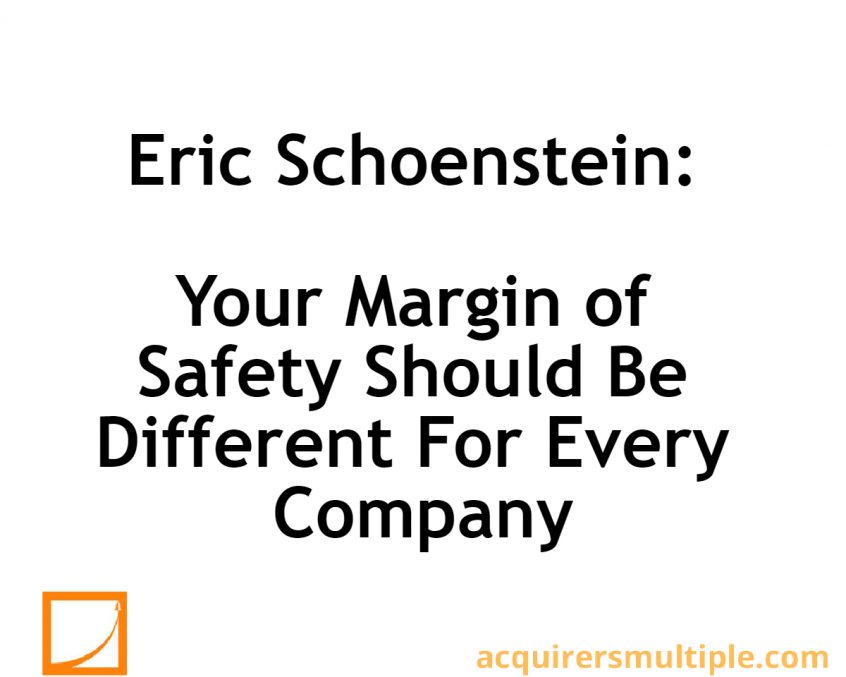In his recent interview on the Morningstar Long View Podcast, Jensen’s Managing Director Eric Schoenstein explains why your margin of safety should be different for every company. Here’s an excerpt from the interview:
Schoenstein: Yeah, I think one of the things that’s important here is we don’t have a specified margin of safety at which point we would enter a name. Our discounted cash flow analysis work that we do is predicated on trying to really build up an entire valuation look at all of the businesses we invest in.
We typically only invest in 25 to 30 companies. So, the good news is that our team of six that manages this investment strategy, we have the capacity to be able to go through those 25 to 30 business models. We want to really make sure we’re encompassing or capturing all of the various elements of the fundamental profile of business. And frankly, the margin of safety will be different depending upon the company, depending upon the industry.
Even the discount rate that we use will be different for every company. So, we have a risk-free rate that’s in place. We have an equity risk premium that we have long determined using fundamental discount rate information from Duff & Phelps. And that information then comprises that discount rate and ultimately then helps us to get to what we believe the full value of the business to be.
The margin of safety, frankly, will be, as I said, different for every company. It will also, frankly, be different depending upon the period that we’re in. So, to your point, modifying or relaxing the margin of safety requirement, certainly in an environment of rising prices and perhaps even multiple expansion, as we’ve seen over the last three years, would have caused some compression in that margin of safety. Ultimately, though, it is a discipline, and the discipline does require us to have some margin of safety.
And I think the idea of having something that’s overly prescriptive or specific perhaps can actually create some unintended consequences. Active investing, frankly, is as much art as it is science. And I think the margin-of-safety issue is one where we believe we’ve got a disciplined process to help us manage that margin-of-safety risk and also be flexible within it to ensure that we’re not overreacting to movements in market prices that could cause us to sell businesses at just the wrong time.
You can listen to the entire interview here:
For all the latest news and podcasts, join our free newsletter here.
Don’t forget to check out our FREE Large Cap 1000 – Stock Screener, here at The Acquirer’s Multiple:



